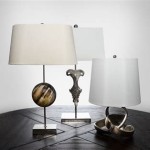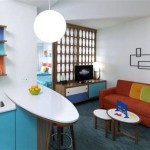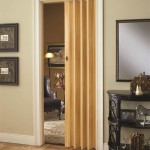Interior Designer Ideas: Transforming Your Space
Interior design is more than just arranging furniture and choosing colors; it's about creating a space that reflects your personality and lifestyle. Whether you're looking to revamp your entire home or simply refresh a single room, an interior designer can provide valuable expertise to help you achieve your vision. They can help you navigate the overwhelming world of design choices and create a functional and aesthetically pleasing environment. From understanding your needs and preferences to implementing practical solutions, interior designers bring a wealth of knowledge and creativity to the table.
1. Defining Your Style and Vision
The first step in any interior design project is defining your personal style and vision. Interior designers excel in this area, guiding you through a thoughtful exploration of your preferences. They can help you identify the elements that resonate with you, whether it's minimalist modernism, cozy farmhouse charm, or eclectic bohemian aesthetics. Effective communication is key. Be open and honest about your lifestyle, your favorite colors, textures, and materials. Share inspiration images that capture your desired aesthetic and discuss your functional needs, such as the use of space and storage solutions.
A skilled interior designer will use your input to develop a comprehensive design plan that reflects your unique personality. They will consider the architectural features of your space, the natural light, and the overall flow to create a cohesive and harmonious design. They will also consider factors like the size and scale of furniture, the use of color, and the placement of lighting to enhance the ambiance and functionality of the room.
2. Optimizing Functionality and Flow
Interior design is not just about creating a visually appealing space; it's also about maximizing practicality and functionality. Designers are adept at assessing the flow of a room and identifying potential challenges in space utilization. They can strategically rearrange furniture, incorporate smart storage solutions, and optimize traffic patterns to create a seamless and user-friendly environment.
For example, if a room feels cramped and cluttered, a designer can suggest ways to create the illusion of space by using mirrors, light colors, or strategically placing furniture. They can also propose solutions like built-in shelving, vertical storage, or multi-functional furniture to maximize space utilization. They will also consider ergonomics and accessibility, ensuring that the room caters to your individual needs and lifestyle.
3. Utilizing Color and Texture
Color plays a pivotal role in interior design, influencing mood, creating visual interest, and defining the overall ambiance of a space. Interior designers are skilled in color theory and can help you choose a palette that complements your style, enhances the architecture, and reflects your personality. They can guide you in selecting the right colors for walls, furniture, and accents, ensuring a cohesive and harmonious visual experience.
Texture is another crucial element that adds dimension, depth, and visual interest to a space. Designers can introduce different textures through fabrics, rugs, wallpapers, and even the use of natural materials like wood or stone. Playing with textures can add warmth, sophistication, or a sense of playfulness, depending on the desired aesthetic. By expertly blending color and texture, interior designers create visually stimulating and multi-sensory experiences.
4. Lighting and Accent Pieces
Lighting plays a crucial role in setting the mood and highlighting key features within a space. Interior designers can create a layered lighting scheme that incorporates natural light, ambient light, task lighting, and accent lighting. They will suggest appropriate fixtures and placements to ensure adequate illumination for everyday activities while also creating a welcoming and visually appealing ambiance.
Accent pieces are the finishing touches that add personality and style to a room. They can be anything from decorative objects and artwork to statement furniture, plants, or rugs. Interior designers can guide you in selecting and placing these accents strategically, ensuring that they enhance the overall design aesthetic and reflect your unique tastes. From textiles to sculptures, they will help you curate a collection that tells a story and completes the visual narrative of your space.

Home Interior Design Ideas Blog Designcafe

10 Contemporary Interior Design Ideas Of 2024 Designcafe

13 Creative Home Decor Ideas Design Cafe

The Best Home Interior Design Ideas For Small House Hamstech

13 Best Condo Interior Design Ideas Renovation Singapore

Interior Design Ideas 25 That You Should Not Miss In 2024

Mansion Interior Design Ideas For Your Home Designcafe

Design Cliniq Modern Interior Ideas Singapore

Interior Design Ideas 25 That You Should Not Miss In 2024

10 N Interior Design Tips To Add Some Desi Drama Your Home








